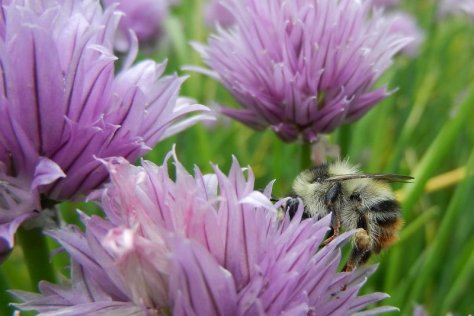How to make your garden bumblebee-friendly?
Text and photos Meelis Uustal
Translation: Liis
A bumblebee-friendly garden can be set up already in autumn. Now is high time to put spring flowering bulbs into the soil. Crocuses, scillas, tulips, snowdrops and snowflakes, narcissi and crown imperials ((Fritillarias) – all are indispensable plants for bumblebees and honeybees in the nectar- and pollen-poor early spring..
While putting the bulbs into the ground it is worthwhile looking around in the garden and make plans on what more might be done to offer the pollinators that are so important for us nectar and pollen in the new year. Some tips:
1. Try to remember on which plants in the garden you have seen bees or bumblebees and when those plants are flowering. Is there any time when no bumblebee magnet flowers in the garden?
2. Set a goal that pollen- and nectar-rich plants should flourish in the garden from April to October. The task seems complicated only at first glance. At least half of the good honey plants grow in the garden anyway – fruit trees, berry shrubs, herbs or also Cotoneaster hedges, maple, willows and limes; on road verges and in the lawn clovers, dandelion, viper’s bugloss (Echium) and rosebay willowherb (Epilobium). Now we only need to plant a few more plants.
3. Set honey plants preferably in a sunny and wind-sheltered site, because all pollinators love warmth and sun! Especially note this for plants flowering in March-April and September-October.
4. Preferably use local plant species and foreign varieties with known good properties but avoid the filled-flower types of honey plants (several narcissi, dahlias, Echinaceas and others ), that don’t produce nectar or where nectar is blocked. In the landscaping of meadows and road verges use native clovers, cornflower, scabiouses (Knautia), viper’s bugloss, melilot and rosebay willowherb. In the garden in contrast several different ornamental plants of foreign origin are indispensable, helping to get over the nectar-poor early spring (crocus,scilla) or autumn (stonecrop, Michaelmas daisy (Aster novi-belgii). Not to talk of summer.
5. Choose flowers with different flower shapes and lengths of the flower tube, because thus a larger number of bumblebee species are attracted. Some bumblebees have long mouth parts (preferring for instance cress and Hosta), others have short mouth parts (preferring white clover and marjoram). Some species prefer hanging flowers (for instance comfrey) others instead umbel-type inflorescenses (chives). So your flower beds will become varied too!
6. Use the square metre rule on planting: one honey plant should cover at least one square metre. All pollinators are very skilled cost-benefit calculators. If there are too few flowers then the energy cost of landing on them is too large and so even good honey plants are spurned if there are few of them.
7. Leave a part of a species-rich lawn or meadow unmowed. Mow only the verges of the footpaths or a metre-wide trail through the meadow. So it is more comfortable to walk and ant at the same time admire the butterflies and bumblebees. It shows to all that the remaining area has been left uncut with reason.
8. If a larger meadow area belongs to the property, then divide the green area into 3-5 parts and mow only one part each year. The areas with different mowing ages support all groups of pollinators. And you however save time and money.
9. Sow a wildflower lawn on road verges and large, little trampled places for greening.
10. Tell your neighbours what you are doing and why it is important! Some neighbours will certainly be looking with fresh eyes on their own garden beds.
11. Don’t use pesticides! In the garden and city there is no need nor justification for it because the damage will not outweigh the benefit. If a plant is permanently sickly and full of pests you should consider whether the reason is not growing in the wrong spot, the composition of the soil or some other condition not suited to the plant.
Good luck!
What garden plants attract bumblebees? Note them on the bumblebee web form and helt gaining new knowledge on the distribution of bumblebees in Estonia!
Bumblebee identificatoin forms: LINK
bumblebee questionnaire: LINK
Join the "Meie kimalased – Our bumblebees“ group on Facebook: LINK









